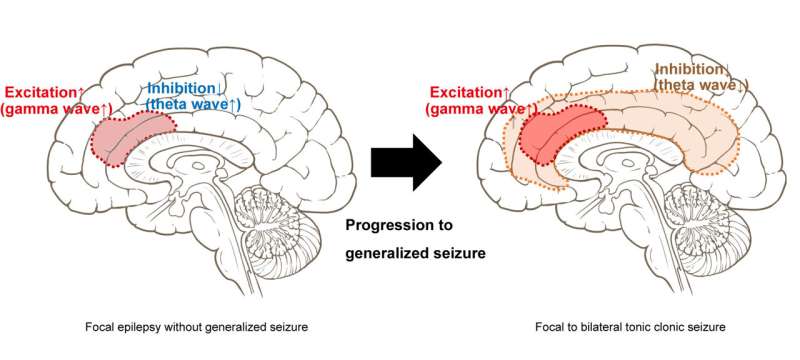education for pharmacy


The mechanisms underlying the pathogenesis of epilepsy, a neurological disorder characterized by excessive electrical activity in the brain, buy levirta dapoxetine au overnight remain unknown. Now, using a novel radiotracer ([11C]K-2, the first technology to visualize and quantify α-amino-3-hydroxy-5-methyl-4-isoxazole propionic acid receptor (AMPAR) in the living human brain), researchers from Japan have been able to offer insight into the role of AMPAR trafficking in epileptogenesis. Their findings could lead to the development of novel therapeutics for patients with epilepsy.
Epilepsy—a neurological condition that causes recurrent, unprovoked seizures—affects millions of people worldwide. While an imbalance in the brain’s electrical rhythms is considered a major contributing factor to epilepsy, its underlying pathophysiological mechanisms remain elusive.
Now, in a study published in Cell Reports Medicine, a team led by researchers from Yokohama City University has been able to study brain functions in patients with epilepsy and shed light on the biological basis of this disorder.
Using positron emission tomography (PET) and electroencephalography (EEG), the team analyzed the role that α-amino-3-hydroxy-5-methyl-4-isoxazole propionic acid receptors (AMPARs) play in epileptogenesis. “AMPARs play a pivotal role in the synaptic plasticity of the brain. Therefore, we recently developed a PET radiotracer, [11C]K-2, which is the first and only technology that can be used to quantify the density of AMPAR in the living human brain. This tracer enabled us to investigate the relationship between AMPAR density and dynamic electrical activity in the brain as measured by EEG,” explains Professor Takuya Takahashi from the Yokohama City University Graduate School of Medicine, who is the lead author of the study.
Neuronal synapses facilitate the transmission of information across neurons. However, synaptic malfunctions lead to various brain disorders, including epilepsy. Synaptic plasticity—a process by which neuronal activity causes changes in the strength of the connections between neurons—primarily exists in two forms: Hebbian and homeostatic plasticity. Whereas Hebbian plasticity facilitates the mechanism by which information can be coded and retained in neurons, homeostatic plasticity moves the neuron back towards its original state. The current study is based on the premise that a malfunction in synaptic plasticity involving AMPAR triggers epileptogenesis.
To gain insights into the biological mechanism of epileptogenesis, the researchers monitored the trafficking of radiolabeled AMPAR in patients with epilepsy. They saw a positive correlation between cell surface AMPAR density and the amplitude of gamma activity in focal epilepsy. Moreover, the transition from focal to generalized seizures was accompanied by a disappearance of positive AMPAR-theta activity coupling and the spread of negative AMPAR-theta activity coupling. This result is of paramount significance, given that the presence of focal to bilateral tonic-clonic seizure is reportedly the most significant risk factor for sudden unexpected death in epilepsy.
The researchers also found that in patients with focal onset seizures, an increase in AMPAR trafficking also increased the amplitude of abnormal gamma activity, as was evident from EEG measurements. In contrast, patients with generalized onset seizures showed a decrease in AMPAR on the cell surface. This decrease was associated with an increase in the amplitude of abnormal gamma activity. The researchers also noted that patients with epilepsy showed lower AMPAR levels than healthy controls. Patients with generalized onset seizures also showed lower AMPAR levels in larger areas of the cortex than patients with focal onset seizures.
“Given these findings, we think that Hebbian plasticity to increase AMPAR trafficking and homeostatic scaling for the compensatory downregulation of synaptic function in seizures could regulate epileptic brain function,” says Prof. Takahashi.
In summary, the team’s findings lay to rest several doubts about the biological basis of epilepsy in humans and may also lead to the development of novel and effective therapeutics for patients suffering from this disorder.
More information:
Tsuyoshi Eiro et al, Dynamics of AMPA receptors regulate epileptogenesis in patients with epilepsy, Cell Reports Medicine (2023). DOI: 10.1016/j.xcrm.2023.101020
Journal information:
Cell Reports Medicine
Source: Read Full Article